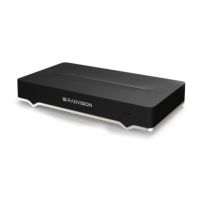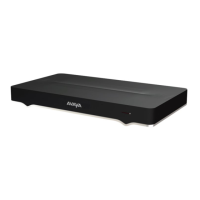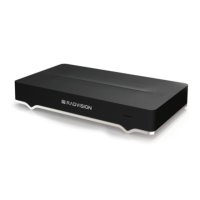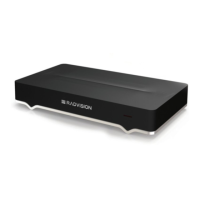Table 30: Configuring 802.1x authentication
Field Name Setting
Enable Select Yes if your XT Series requires access to network resources via
802.1x authentication.
User Name, Password Enter the 802.1x username and password.
Related Links
Configuring Advanced Network Settings on page 116
Configuring NAT and Firewall Traversal
About this task
Avaya Scopia
®
XT Series fully supports NAT and firewall traversal, enabling you to place it behind a
NAT router or firewall and connect with other endpoints seamlessly.
If an XT Series located inside your network hosts a call on its built-in MCU, other endpoints must
contact the host unit by dialing its IP address. However, when sitting behind a NAT or firewall, a
device can have an internal IP address which cannot be reached from outside the network. This
poses a problem for endpoints located outside the network to find the correct IP address to dial.
There are several ways to resolve this:
• (Recommended) Contact a STUN public server to return your IP address as it looks from
outside the network, and then send this public IP address to all endpoints you invite to the
meeting. This is known as STUN auto-discovery. This also works for HTTP public servers.
• Use a dedicated firewall traversal solution like the Avaya Scopia
®
PathFinder server and set it
as your gatekeeper (see
Configuring Advanced Gatekeeper Settings on page 124).
• You can manually set a static public IP address of the unit, and configure your firewall and NAT
to ensure this is reflected externally outside the network.
For more information on each of these topologies, see
Planning NAT and Firewall Traversal with
Avaya Scopia
®
XT Series on page 27. When traversing firewalls, remember to set the firewall ports
as detailed in Configuring the TCP or UDP Port Range on the Avaya Scopia
®
XT Series on
page 40.
Before you begin
If configuring from the endpoint, you must first enable advanced configuration, as described in
Enabling Advanced Maintenance on the XT Series on page 112.
Procedure
1. Access the firewall and NAT traversal settings. From the XT Series web interface, select
Administrator Settings > Networks > Preferences > NAT. From the endpoint's main
menu, select Configure > Advanced > Networks > Preferences > NAT.
Configuring Advanced Network Settings
April 2015 Avaya Scopia
®
XT Series Deployment Guide 121
Comments? infodev@avaya.com

